In a free market where efficiency and value for money are the driving factors, the consumers become conscious (and highly selective) in what they are buying and what they get out of it. Who would buy a less fuel efficient car or for that matter an electric appliance which consumes more electricity for the amount of work it does? As much as this sounds counter intuitive in this case, it fails to apply in case of water usage.
Productivity of water is much like the mileage of a car. But this thought isn't extended to water usage! We could very well question how much water produces say...a ton of wheat or a ton of rice. And just as a car's engine, we could tweak or modify our production techniques to obtain a better milage equivalent in agriculture.
Why wouldn't we want to make our water usage efficient, like so many other things that we consume? The most acknowledged reason could be the fact that we don't pay for it as the way we do for fuel, electricity etc. India has had the much needed green revolution where the country's grain ouput increased significantly and helped achieved food security. But there was a price to be paid. Agricultural productivity relied very heavily on groundwater resources to fuel the revolution. Today, the water resources as well as the land resources have little scope of expansion. What, in such a situation are the options for a country which now ha highly depleted water resources?
World Water Use
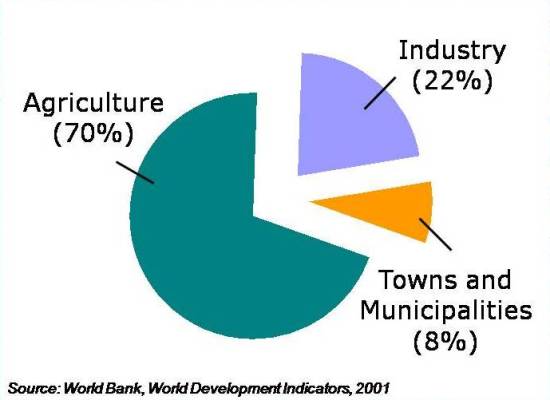
Credit: Sandra Postel and Amy Vickers, "Boosting Water Productivity"
Water Productivity of Selected Countries

Credit: Sandra Postel and Amy Vickers, "Boosting Water Productivity"
Estimated Annual Water Withdrawals Per Capita, Selected Countries (2000)
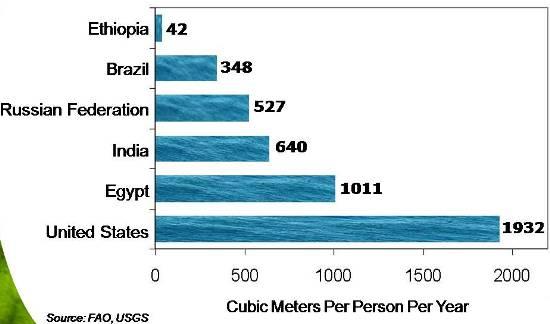
Credit: Sandra Postel and Amy Vickers, "Boosting Water Productivity"
The mission of CPWF is : “To increase the productivity of water for food and livelihoods, in a manner that is environmentally sustainable and socially acceptable.” Water productivity plays a crucial role in achieving food security. In the Indus Gangetic basin, where a significant population reels under poverty , water productivity becomes a crucial issue to tackle so that developement as well as sustaibaility of environment, both are ensured.
Basin level studies in water availability and productivity are therefore important so develop a comprehensive strategy to ensure sustainable basin development . In the workshop , the following presentations addressed the issue of water productivity in the Indus-Gangetic basin
- Water resources assessment by Luna Bharti (download)
- Use of Remote Sensing/ GIS and Census Data for Estimating Basin Level Water Productivity: Methodological Concepts by Bharat Sharma (download)
- Water Productivity Analysis of the Indus-Gangetic Basin by Bharat Sharma (download)
In this very interesting study of estimating basin level water productivity using Remote Sensing and Geographical Information System based approach, Bharat outlines the major steps of the method. It starts with preparation of a series of highly descriptive maps followed by pattern observation and arriving at the factors that could lead to improvement in productivity levels.
- Crop Dominance Map
- Crop Productivity Maps
- Crop Consumptive Water Use
- Water Productivity and the Variations
- Causes for Variations and Scope for Improvement
But, what do we gain from mapping water productivity? The overarching goal of Water Productivity assessment is to identify opportunities to improve the net gain from water by either:
-increasing the productivity for the same quantum of water
-reduce the water input without or with little productivity decrease
This is how the maps look like.
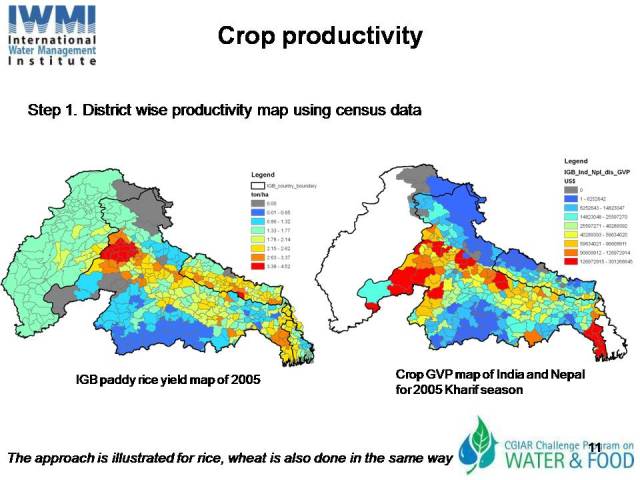
abd
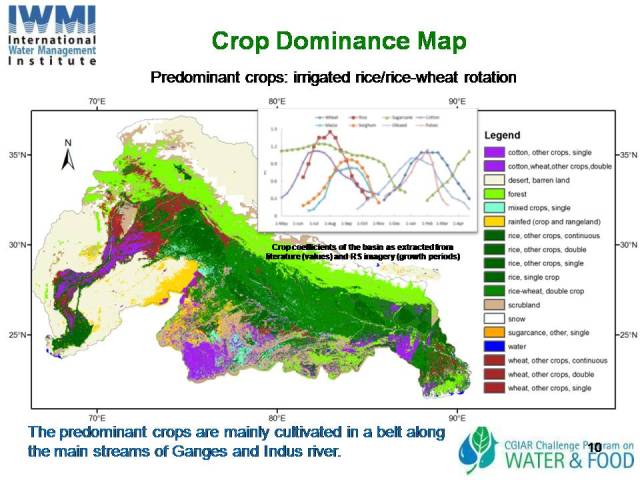
The crop dominance map was determined from three existing Land Use and Land Cover maps (Global land cover characteristics data base (GLCCD), Global Irrigated Area Mapping (GIAM), Asia paddy rice map) with MODIS NDVI products and Ground truth inputs.
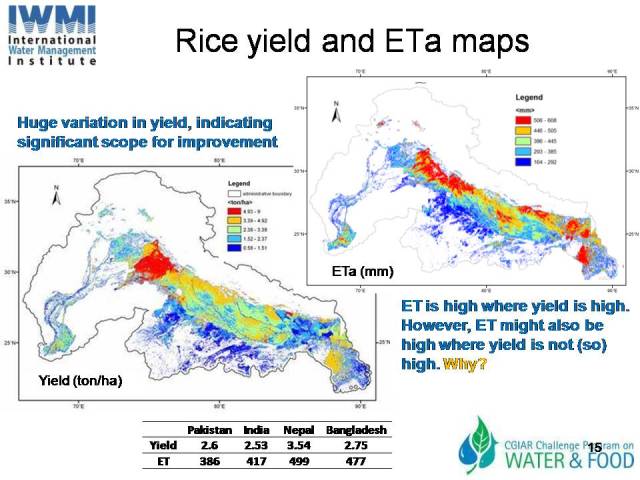
Evapotranspiration (ET) and rice yield
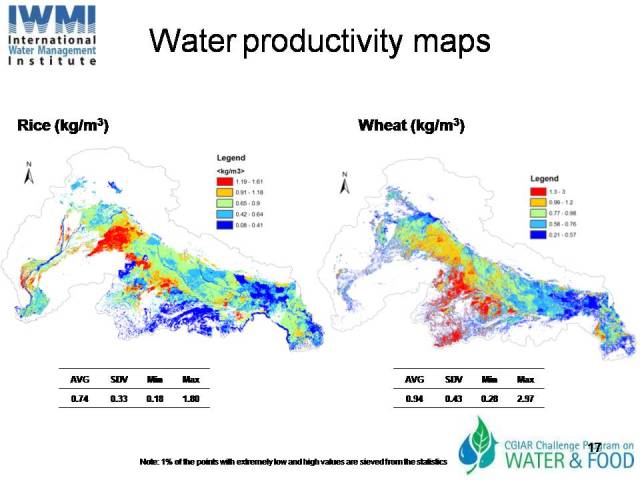
Water productivity (WP) is “the physical mass of production or the economic value of production measured against gross inflow, net inflow, depleted water, process depleted water, or available water” (Molden, 1997, SWIM 1). It measures how the systems convert water into goods and services.
The findings from these water productivity maps show that:
- Water productivity in Indo-Gangetic river basin is generally low, meaning great scope for improvement
- Significant variability exists across fields and regions. General decline from North-west to South-east could be observed
- The variability shows no direct relationship with climate conditions, implying the significance of irrigation
- Basin average yields and water productivity of the predominant crops are generally low despite intensive agricultural activities
- Sugarcane, pulses and millet make significant contributions to the overall productivity of water
- Significant scope exists for improvement, which could be achieved mainly by long term yield enhancement. In short term, reducing non-beneficial ET of low yield areas can also largely contribute to improved WP.